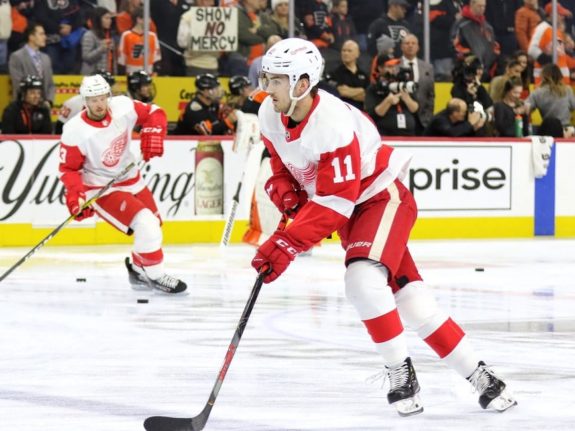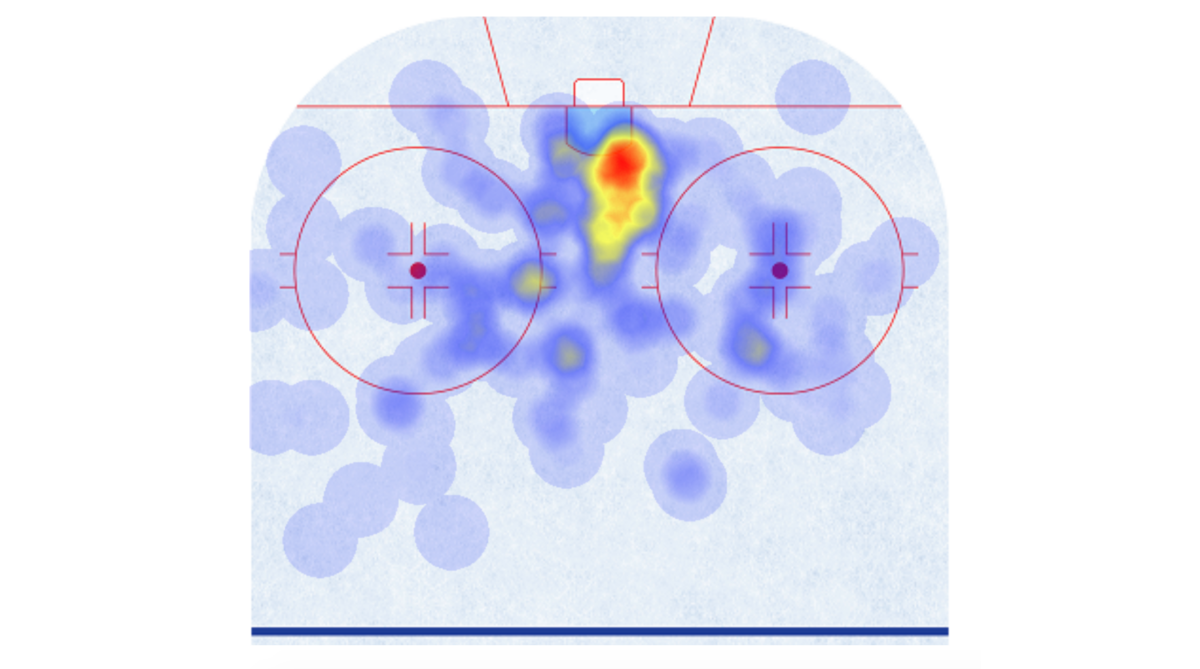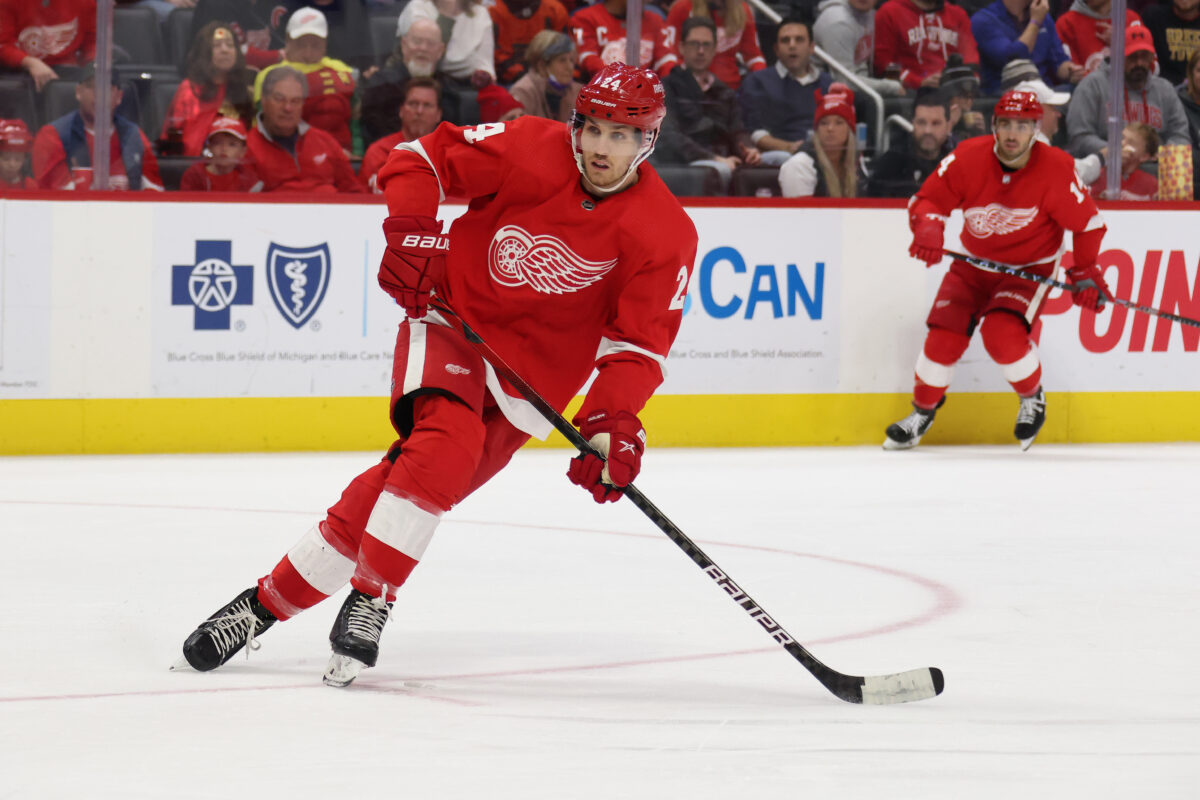On Tuesday night, the Detroit Red Wings scratched Filip Zadina, opting to sit the forward against the San Jose Sharks. While it’s not uncommon to give a young player an opportunity to reset and watch the game from another angle, it did highlight a question that has been filtering through social media for some time: What’s wrong with Filip Zadina?

With only four goals and 10 points in 32 games this season, the 22-year-old has not been producing as expected. If the Red Wings hope to contend soon, they’ll need Zadina to be a top-six offensive threat.
Let’s dive into Zadina’s game and numbers to diagnose what exactly is causing his power outage.
Zadina’s Expected vs. Actual Production
As a baseline, I used Zadina’s 2019-20 season when evaluating this year’s data. He had a 28-game cameo that year and produced 15 points in that span.
While actual, on-paper production is down comparatively, all of Zadina’s advanced metrics are greater than or equal to his 2019-20 numbers. At a per-60 minutes rate of all-situations hockey, shot attempts, expected goals, and high-danger chances are up or even both for Zadina individually and when he’s on the ice in general. MoneyPuck’s heat map of Zadina’s shot attempts below suggests he’s getting to the right places in the offensive zone, too.

However, Zadina’s shooting percentage is way down this season. He’s shooting a lot—18.15 shot attempts per 60—but only has four goals to show for his efforts.
Natural Stat Trick suggests Zadina should have 6.19 goals this year. MoneyPuck is a little more bullish with 6.49 expected goals from Zadina. Add in expected goals from his linemates and Zadina should have a stat line closer to six goals and 15 points in 32 games – at the very least.
Zadina & His Red Wings Teammates
When looking at Zadina and his common linemates, a couple things immediately jump out. First, he has spent the most time with Pius Suter – by far. The two have skated together for 275 minutes of all-situations hockey – almost 100 more minutes than his next most frequent linemate, Robby Fabbri.
The other observation is that Zadina and Suter do not have chemistry together. For both shot attempts and expected goals, both forwards are better apart from each other than they are together.

In fact, Zadina’s shot attempts and expected goals are much better when he’s on the ice with Detroit’s other top forwards. Most notably, Lucas Raymond and Zadina’s shot share and expected goal percentage are both through the roof, albeit with a much smaller sample size.
These analytical observations jive with the eye test, too. The line of Zadina, Suter, and Fabbri features three smaller skaters without a power forward to battle for possession down low. The first line has Tyler Bertuzzi in this role. When skating with Suter and Fabbri, this has been Zadina’s assignment, which doesn’t exactly align with his skill set. It’s also why Suter and Fabbri thrived against the Sharks when Michael Rasmussen subbed in for Zadina (74.83 percent expected goal share at five-on-five).
What’s Next for Zadina and the Red Wings?
The puck isn’t going in. It should be, but that just hasn’t been the result yet. But there are ways to remedy Zadina’s scoring woes.
First, the Red Wings should put him on a line that accentuates his offensive abilities. Let Rasmussen or Adam Erne do the dirty work while Zadina and someone other than Suter do the playmaking. In fact, Zadina, Rasmussen, and a fully healthy Jakub Vrana have complementary skill sets and could be a dangerous middle-six line. A proven scorer like Vrana could open up more space for Zadina to create his own offense.
Deploying Zadina on the man advantage could also provide a spark for the forward (and the lowly power play). He was recently taken off the power play, though the change hasn’t produced better results. Returning Zadina to his flank and more appropriately using the bumper to occupy defenders’ attention will open up more shooting lanes – and ideally create more scoring chances.
But until these (or other) changes are implemented, be patient with Zadina. His career shooting percentage suggests that more goals are coming. Perhaps being scratched will be just the motivation he needs to create more offense for himself.
Stats courtesy of Natural Stat Trick and MoneyPuck.